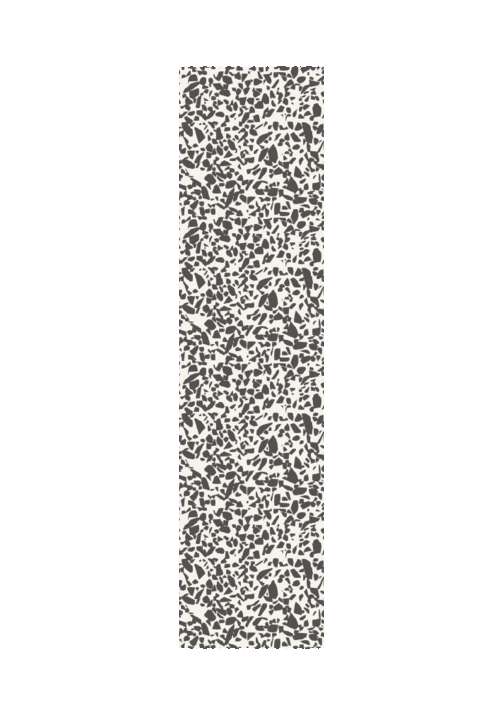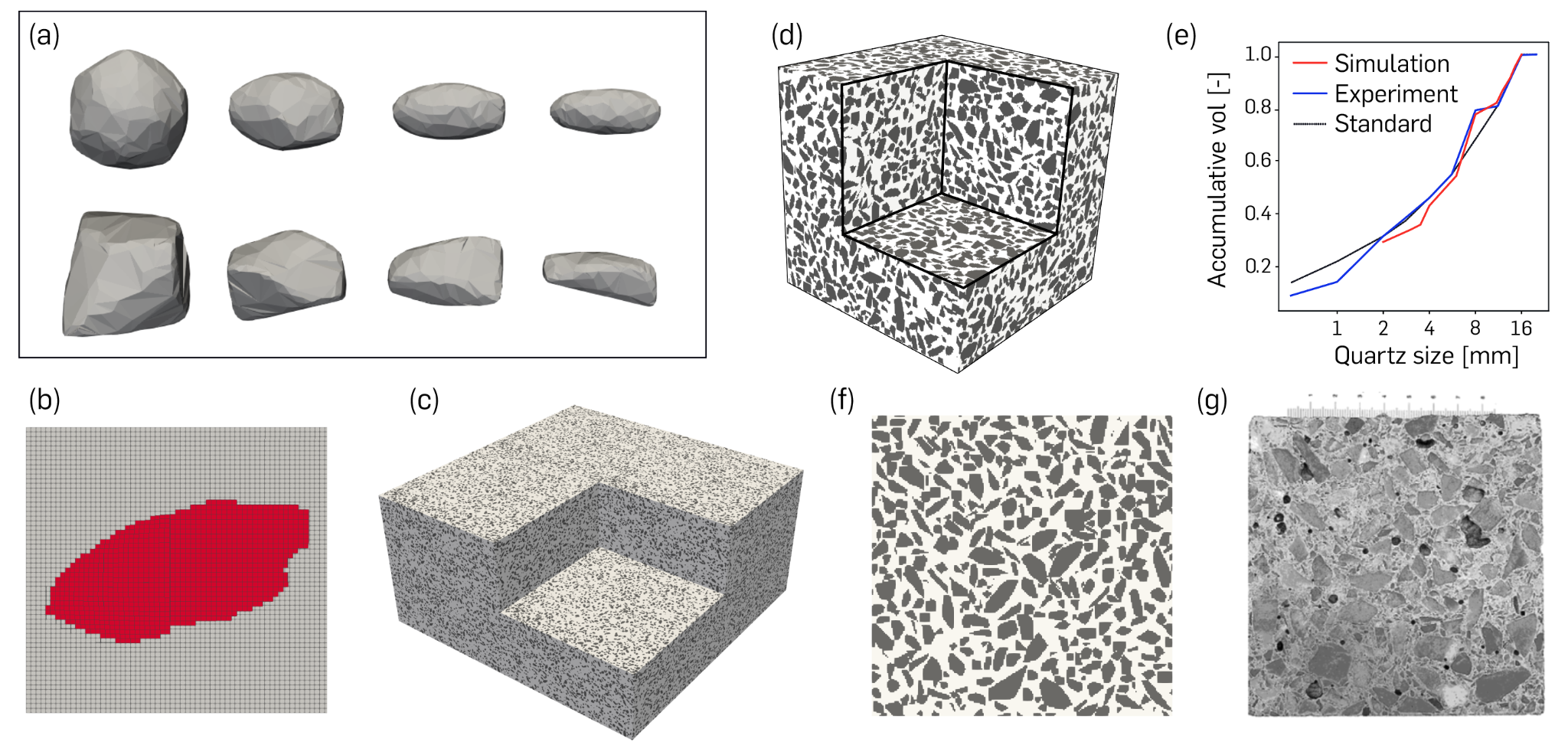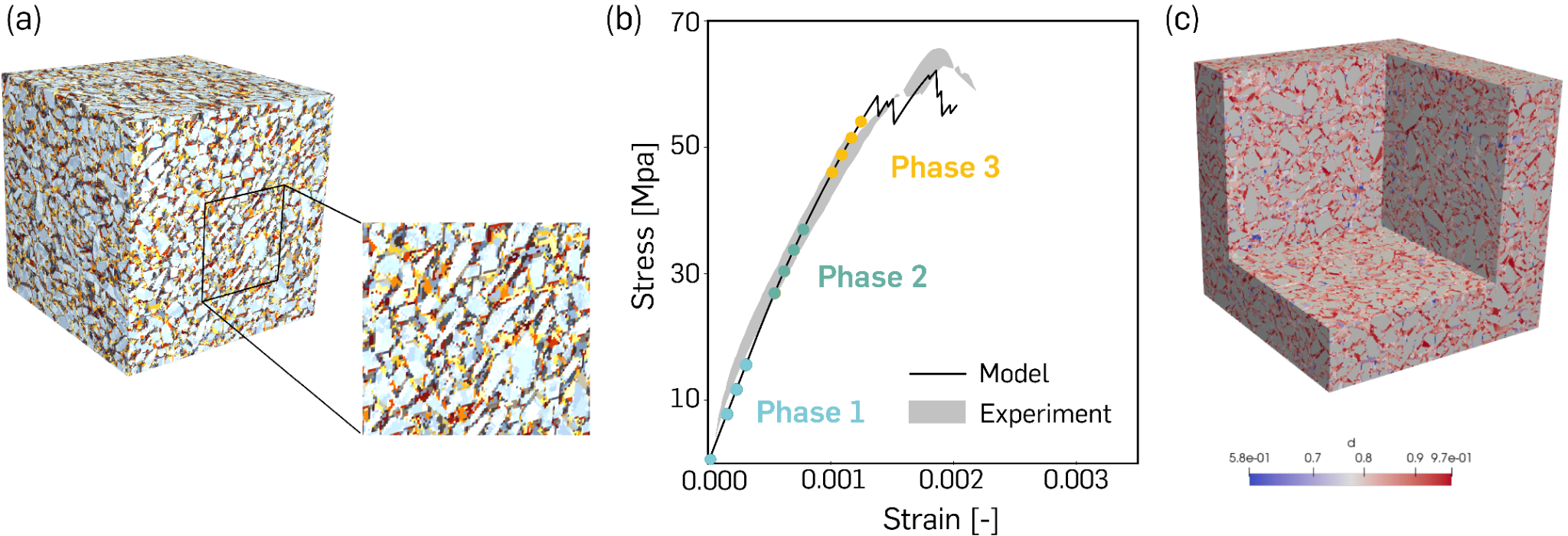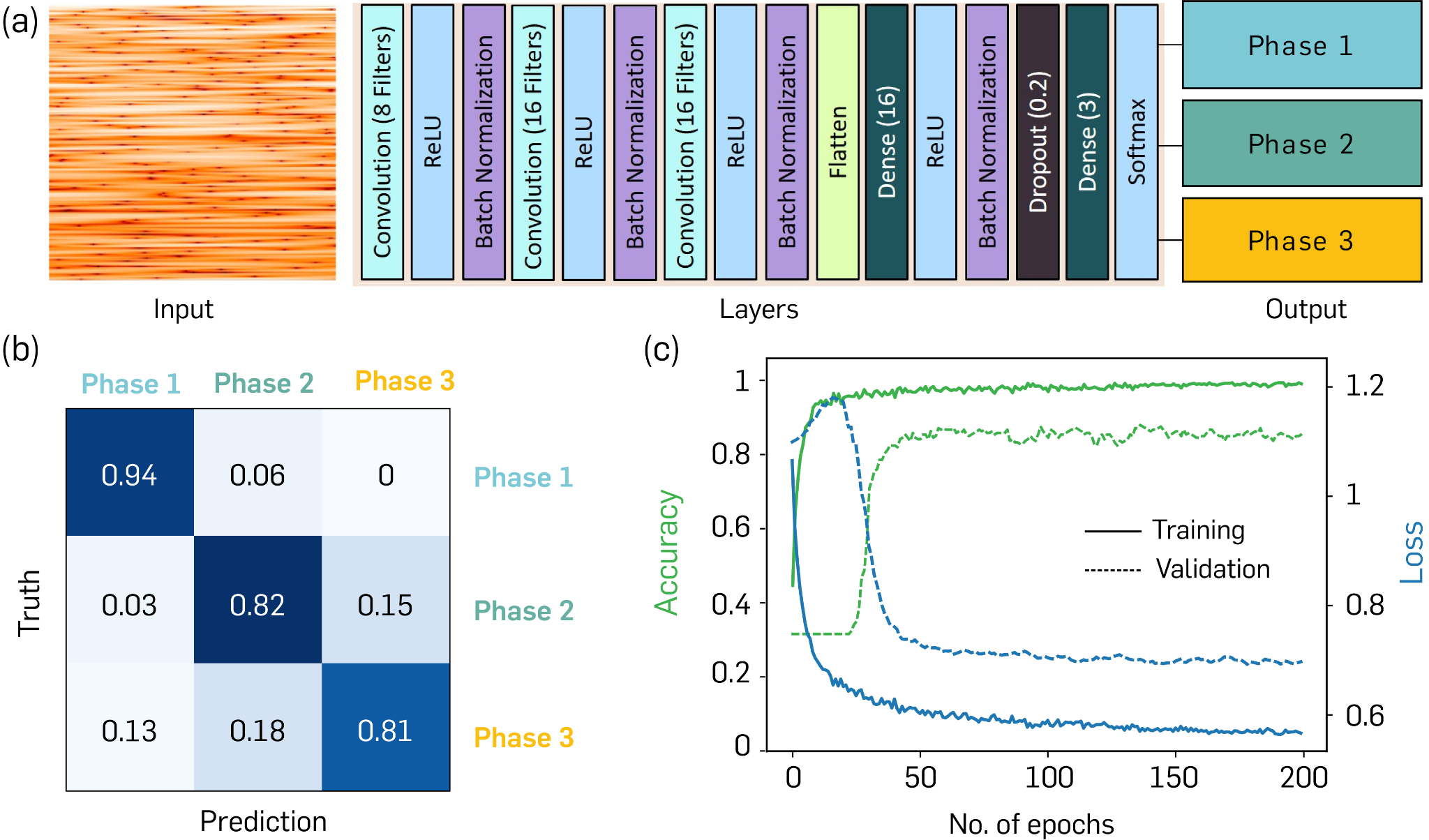To establish a model-based characterization of the degradation of concrete at multiple scales and to enable a classification of the level of damage using simulated and measured coda data is the objective of the CoDA research unit.



In order to simulate realistic fracture processes in concrete, a virtual concrete micro- and mesostructure generator was developed that simulates distributed microcracks using a multiscale micromechanical model. The algorithm is capable of generating extremely realistic concrete mesostructures given a particle size distribution. The coarse aggregates are modeled as polyhedra with multiple faces, different aspect ratios, and concave depressions (Figs. 2a and 2b). These are assembled into a mortar matrix using a hierarchical sequential random adsorption algorithm considering the particle size distribution (Fig. 2e). Fig. 2c shows a large-scale concrete model generated by stacking 8 copies of a single concrete block by exploiting the periodicity of the mesostructure. Figs. 2f and 2g show a comparison between the actual and numerical concrete cross sections. A Python implementation of PyCMG has been developed and is available as open access/source at https://pycmg.readthedocs.io.
Results of a uniaxial compression simulation are summarized in Fig. 4. Fig. 4a shows the reduced-order concrete specimen. As can be seen in Fig. 4b, the model prediction is in agreement with the experimental data (measured by TUM1). Model predictions show that microcracking occurs predominantly in the vicinity of the aggregates as a consequence of local stress concentrations, which is in agreement with experimental observations [9]. It is to be noted that, i) no implicit macroscopic constitutive law needs to be employed, and ii) microcracking is a direct consequence of mesoscopic heterogeneity and pre-existing defects in concrete. The model-order reduction has enabled a substantial speed up that is 10⁴ times faster than an equivalent numerical simulation.

The central theme of the Research Unit RUB1 is to identify the level of damage in concrete using diffuse ultrasonic coda waves. To generate virtual concrete specimens at various levels of damage, a reduced-order multiscale model was developed in the first phase of the project. At the scale of the cement paste, microcrack growth is modelled using a combination of continuum micromechanics and linear elastic fracture mechanics. The micromechanics model is incorporated into a reduced-order Lippmann-Schwinger based mesomodel for concrete. A schematic illustration of the multiscale model is described in Fig. 3.

In this study, 12 voxel data snapshots of damaged specimens obtained from the uniaxial compression simulation are grouped into 3 phases (see Fig. 4). The 12 corresponding degraded stiffness field serve as input for the forward wave propagations simulation. Ultrasonic wave simulations are used to acquire a dataset of 972 time series signals, which are analysed using Coda Wave Interferometry. Machine Learning methods like Random Forests, Support Vector Machines and Neural Networks are used to train a classifier to identify the level of damage from the coda signals. The signals are normalized, reshaped into images and fed into a Convolutional Neural Network classifier, which achieved an 85% accuracy in predicting the 3 damage phases. However, there is still some difficulty in distinguishing between diffuse microcracking and microcrack coalescence (Phase 1-2), resulting in approximately 15% misclassification (see Fig. 5)
